Pizza Procedure 1.0
My Every Saturday Pizza
I usually start at 2 o'clock. I got started late on the day I did this because I did my fire elemental weekly and it took a while because it was like me and 5 people instead of the usual dozens.
320g flour, 225g water, 1½ tsp sugar and yeast.
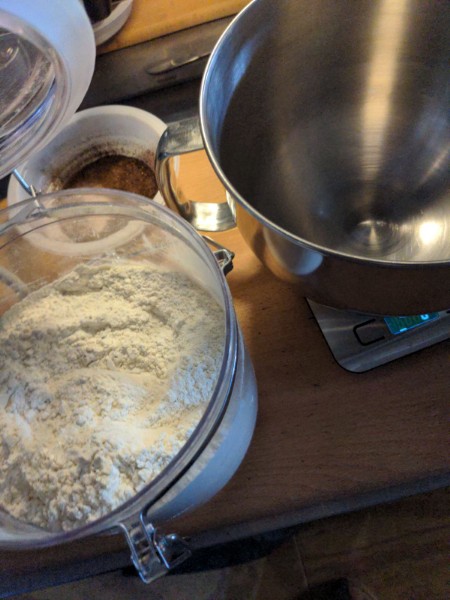
Let it go a minute on 1, then add the water slowly.
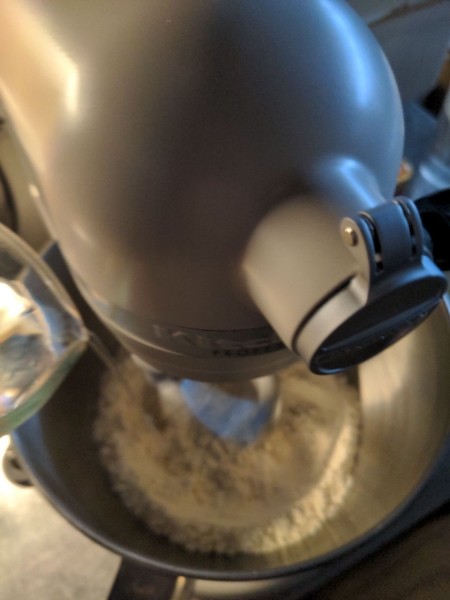
Sometimes it needs a little help.
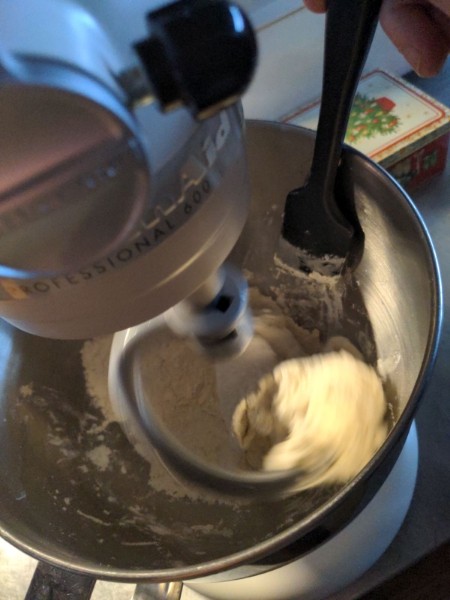
Once it's mixed up, cover and let sit for 10 minutes.

I add more salt than the recipe says, 1½ tsp, because I don't want to dirty another spoon. Once the salt is added, run the machine for 8 minutes on speed 2. Check and see if it needs more flour after a couple of minutes.
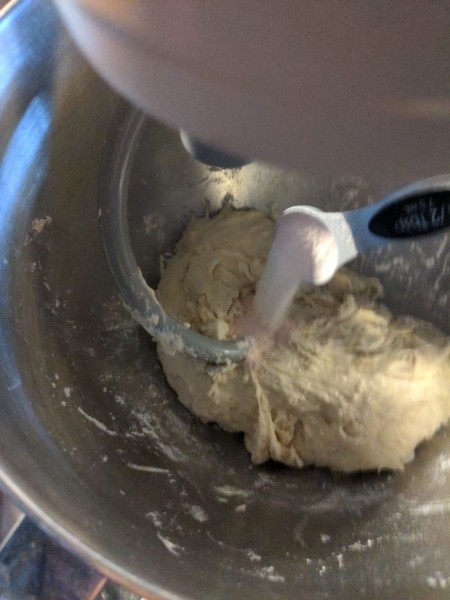
See, that needs a little more flour. That'll never make a ball.
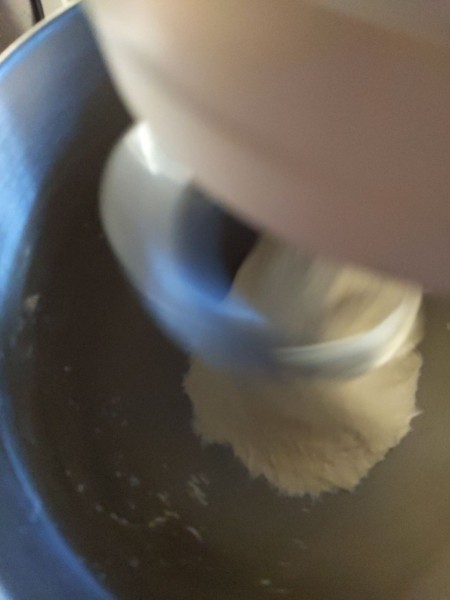
After adding maybe a couple of tablespoons of flour, that's much better.
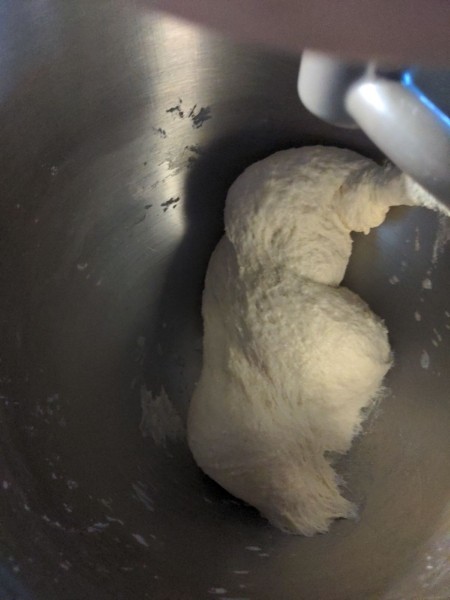
Before the kneading is done, prepare the pan with Pam on the edges and a tbl of olive oil.
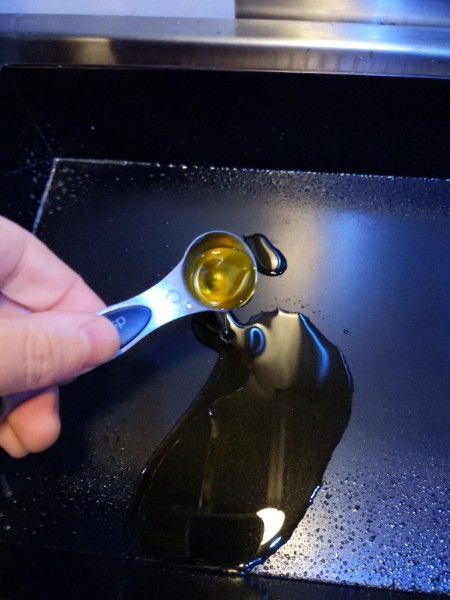
That's close enough I think. It went for almost 10 minutes.

Get a little oil on your tools, then scooch the dough around to make sure it's well oiled and the pan is evenly coated.
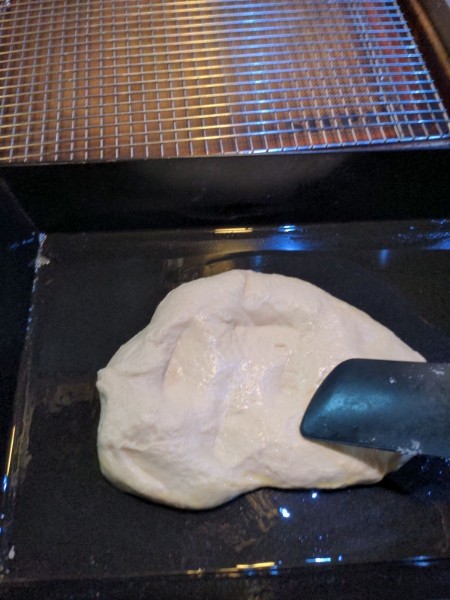
Stretch it as much as it will go. Cover and let rest for 15 minutes and try again to get the corners situated.
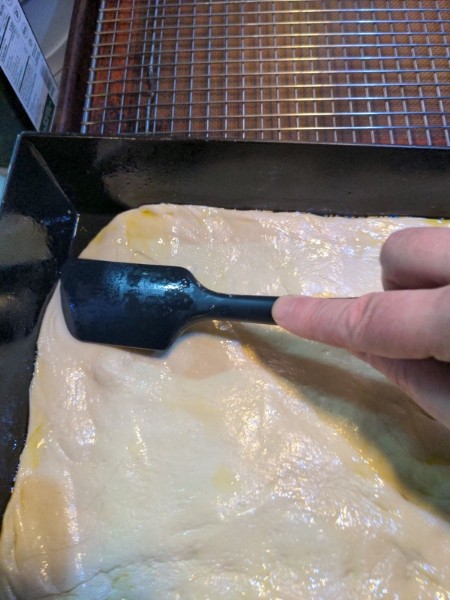
That'll do. Now cover and let it rise until dinner time. 3 hours or so.

An hour later, it seems like not much is happening. That's fine.
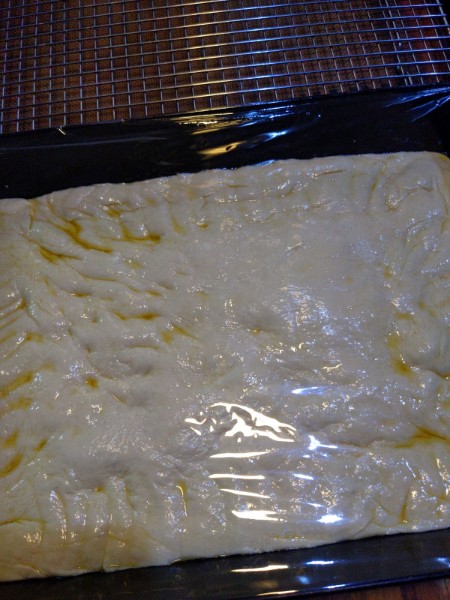
Almost 2 hours now, and starting to see some rise.
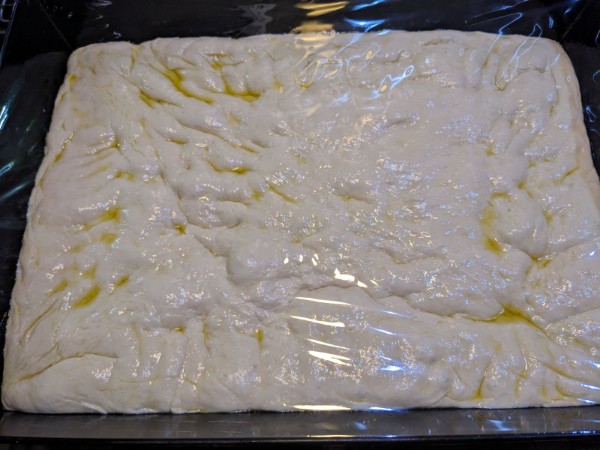
It's been a little over 3 hours. I'm going to put it on top of the oven while it preheats.
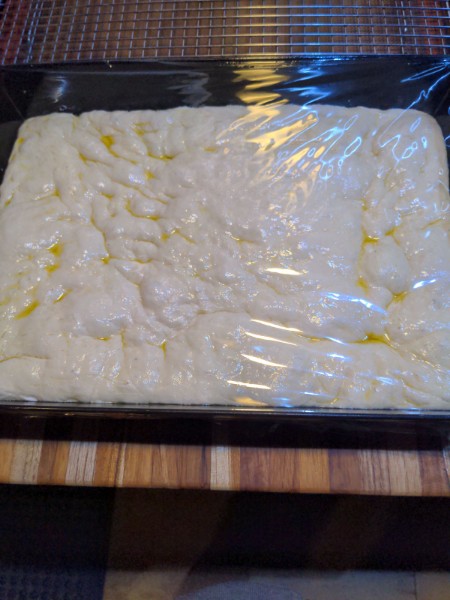
4 hours since the kneading started. Looks pretty good.
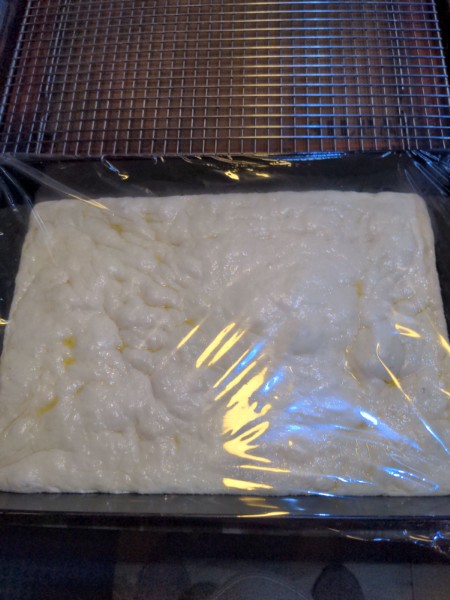
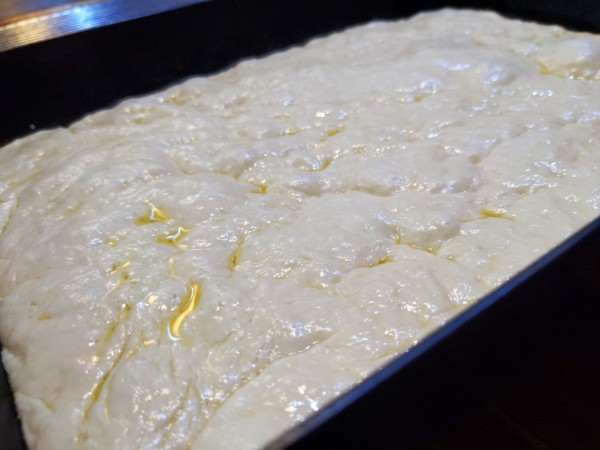
This is absolutely key. You want a "moat" of cheese around the edge. Maybe half of the cheese used is piled around the edge. I just use store brand Mexican blend cheese shreds. You can use anything that will melt and brown.
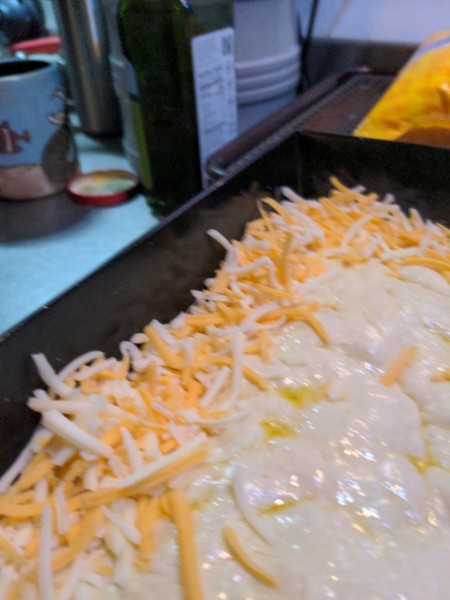
Like this.
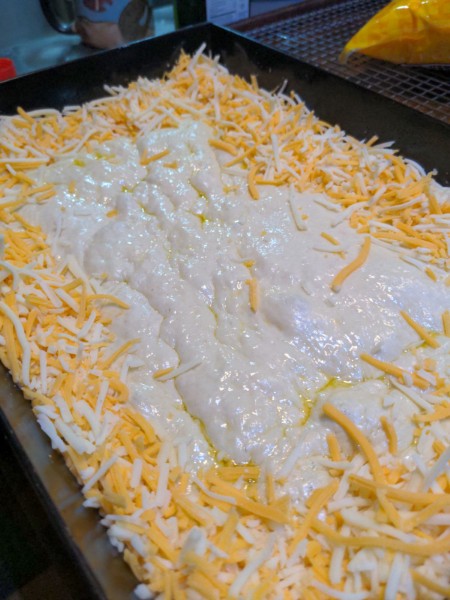
Toppings are at your discretion. I do just pickled jalapeños, but almost anything is fine, really. If it'll burn, maybe put under the cheese. I do that with leftover taco meat sometimes.
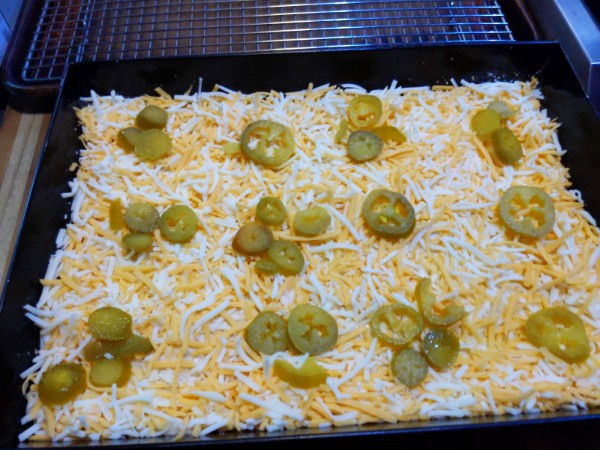
I don't usually do sauce because it makes a mess, but three stripes long ways are traditional.
Now in a 475° oven for 11 minutes on convection. Usually I give it a rotation halfway through, but not strictly necessary unless your oven is really uneven.
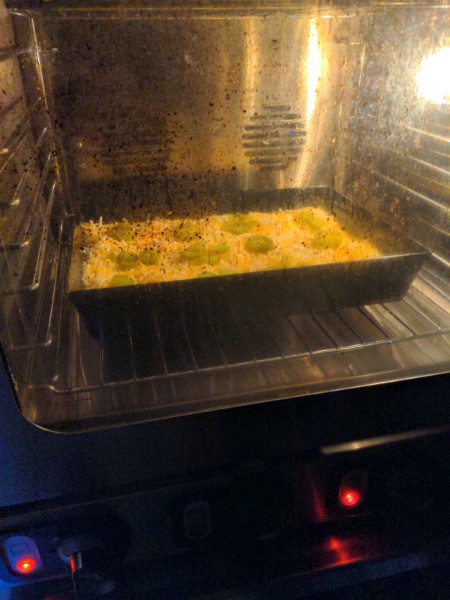
Once it stops sizzling, take it out of the pan and put on a cooling rack.
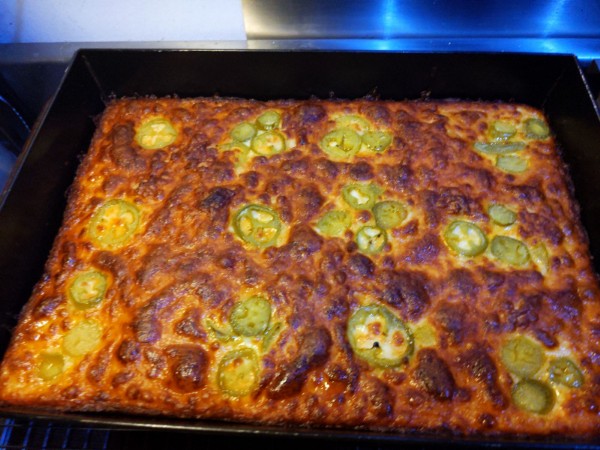
I cut it into 12 pieces, eat the middle six fresh, and save the corners and edges for leftovers.

Sitting down to eat, 4:40 since the beginning of kneading.
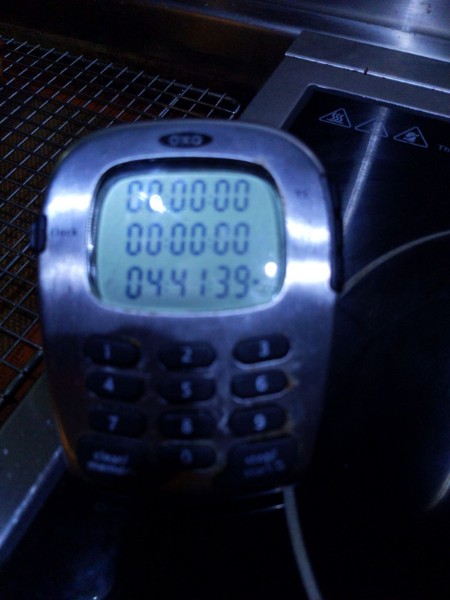
This has been the pizza procedure.